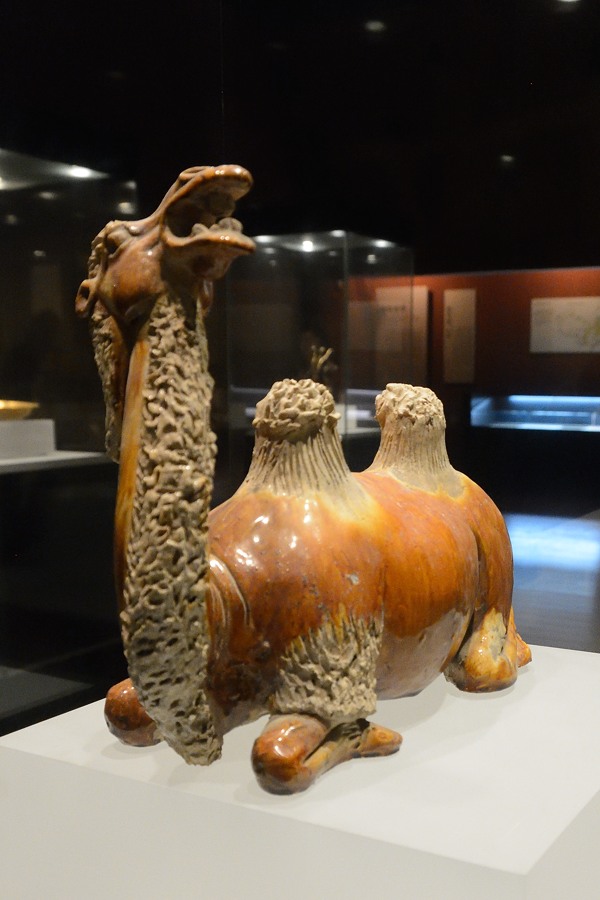
The second day of our visit to Xi'an started at the Shaanxi Provincial Museum in downtown Xi'an.
These are the end caps of ancient roof tiles.

There are a lot of tri-colored glazed pottery pieces. Many of these items were recovered from tombs.
This is another example. It was difficult to take good pictures. It was pretty dark in the museum and there were a lot of reflections.
She is not giving you 2 thumbs up.
This tri-color pottery is from the Tang Dynasty (618-907 AD).
I think the beast of burden of choice on the Silk Road was the camel.
This is part of the funerary guard of Prince Qinjian of the Ming Dynasty.
There are more than 300 pieces in the group.
These Buddhas and plinths were carved in 1067 at the foot of Zhongshan mountain.
As expected, they had a section on the Terracotta Warriors.
Notice the details in his hair and armor.
Some of the original color remains on this example.
This bronze goose was recovered from the Qin Shihuang's mausoleum and dates from about 200 B.C. Qin Shihuang was the first emperor to unite China and was responsible for the Terracotta Warriors.
This is an incense burner I believe.
After the museum we headed to the Small Wild Goose Pagoda. It was built between 707 and 709 A.D. It is about 43 meter tall.
It was originally 45 meters tall until it was damaged in the 1556 earthquake.
We had lunch at a dumpling restaurant just outside the Pagoda. Here Nancy successfully picks up a mu'er (wood ear fungus) with her chopsticks. Ed wasn't impressed.
The dumplings were made in the form of their ingredients. Here you can see lotus, chicken, and some sort of leaf.
After lunch we headed toward the airport but stopped at new museum at the Tomb of Emperor Jingdi. This is an in-door museum built over the pits. You actually walk over the pits on a glass floor.
Emperor Jing was the 4th emperor of the Western Han Dynasty which followed the Qin Dynasty. He had the same idea as Qin Shihuang but could only afford miniature terracotta figures.
This pictures is looking down through the floor. The human figures are perhaps 20 inches tall. They originally had wooden arms and were clothed but these materials have rotted away over the last 2000 years.

The tomb was equipped with animals for food in the afterlife.
So far they have excavated only 10 of the 86 pits that surround the tomb.


















No comments:
Post a Comment